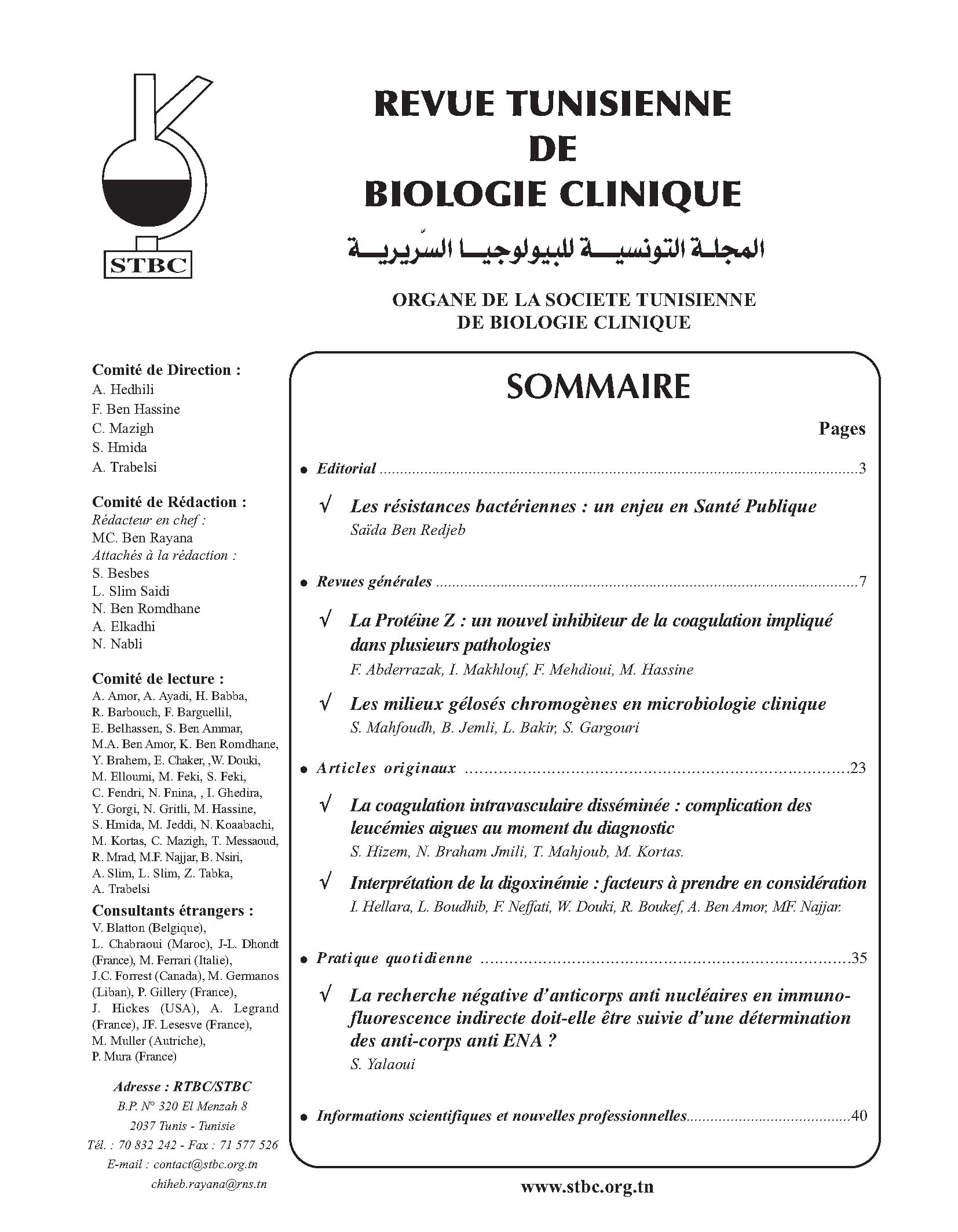Abstract
Disseminated intravascular coagulation (DIC) is a complex syn-drom which may complicate acute leukemia at presentation and during chi-miotherapy. The presentation of DIC may range from thrombo-hemorragic symptoms as in acute promyelotic leukemia (APL) to moderate formes with low grade of severity in other leukemia subtype that makes difficulty in its diagnosis. The aim of this study was to evaluate the prevalence of DIC in acute leukemia at presentation and before chimiotherapy. We studied 36 patients with newly diagnosed acute leukemia : 23 acute myeloblastic leuke-mia (AML), 12 acute lymphoblastic leukemia (ALL) and 1 biphenotypic acute leukemia. Their mediane age was 40 years (range 4-80). They were screened for DIC according to the ISTH (International Society of Thrombosis and Haemostasis) diagnostic criteria by analysing the results of routine labo-ratory tests : platelet count, prothrombin time, plasma fibrinogen, Ethanol test, fibrinogen/fibrin degradation product (FDP), D-dimer. The prevalence of DIC in our population was 30% (11/36), it was higher than reported in litera-ture. The DIC was more prevalent in AML than in ALL, and constant in APL. The complexity of its pathophysiological mechanisms and the difficulty of its diagnosis in the moderate formes, suggest that DIC should be investigated in acute leukemia at presentation for early therapy because although moderate the DIC increases the bleeding risk attributed to thrombocytopenia seconda-ry to bone marrow failure.

This work is licensed under a Creative Commons Attribution 4.0 International License.
Copyright (c) 2023 Revue Tunisienne de BIOLOGIE CLINIQUE


